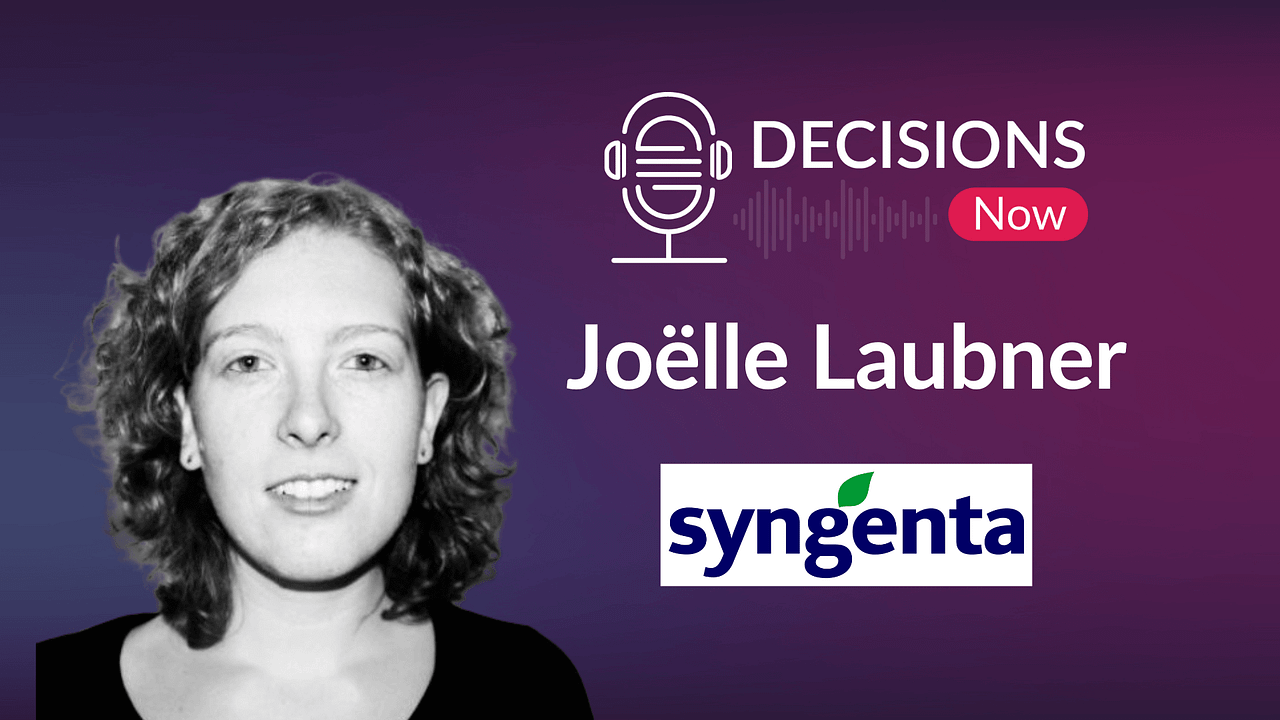The auto insurance industry is rapidly transforming with the use of artificial intelligence (AI) and data analytics, like many other businesses. In this episode of the Decisions Now podcast, Charles Boyle, VP, and global chief data officer at Octo Telematics discusses how the industry is succeeding by leveraging the power of data and technology.
Co-hosts Rigvinath Chevala, Evalueserve’s chief technology officer, and Erin Pearson, VP of marketing chat with Boyle on how AI is being used to assess driving risk, insurance rates, driving behaviors, predictive maintenance, and more!
Digital transformation
The auto industry is currently amid a digital transformation, brought on by developments in technology. This transition shows the migration from device-based telematics to using smartphones as a sensor, collecting data from tablets, and smart tags that can be installed in a vehicle.
As the sector moves from hardware-centric platforms to embedding telematics, data can be derived from different trips and drivers and added to a centralized repository for analytics purposes, Boyle said.
Like most things, there are pros and cons to this journey. The pro being there will be an all-digital platform, someday, but the con is that OEMs (original equipment manufacturers) haven’t yet caught up with the level of granularity.
“What’s interesting about that topic is there’s a lot of granularities in the data that could be captured on a device that’s embedded in your OBD2 port or in a smart tag or even in your smartphone quite honestly. But when we think about the playing field for data procurement as it relates to smart mobility, not all OEMs are using the same devices,” Boyle said.
Currently, a core area of AI and machine learning (ML) leveraged by Octo is extensive work around crash detection, crash reconstruction, and damage estimation.
With these technologies, the company gets ahead of claims management processes.
“You’ve seen on the different television commercials, you could take a picture of the damage it’ll get sent into a claims adjuster,” Boyle said. “We can accelerate some of that by being proactive, detecting that an accident or event has taken place. Upload that information for first notice of loss, and send that to your insurance carrier via a digital platform.”
This Telemetry data from these vehicles allows companies to reconstruct what took place in an accident or incident, pulling together a crash dossier that the insurance adjuster can work from as opposed to just photography, and digital images.
AI and ML in the Auto Industry
The trio dived into how changes due to world events like the pandemic and changing technology have resulted in new trends.
There is a shift for auto manufacturers to also become data companies, embedding firmware within the vehicle to capture data from predictive maintenance, being one of them.
“It’s just the interesting change in culture. I think we’re going to become more of an e-commerce platform where we’re buying directly from the manufacturer,” Boyle said. “We’re not going through dealers anymore. We’re going to multi-brand car dealers now.”
He explained the lack of movement of cars during COVID, which resulted in many different outcomes, like:
- Lower amounts of data were collected due to the slowdown in driving activity, including insights into crashes.
- The current aggressive market for use cars due to low mileage on cars during the pandemic
“So that was a rough patch for us from a data procurement, and data collection perspective. But we’ve obviously come out of that people are out and about again and that data’s being compiled and put into our data lake,” Boyle said.
Currently, they have about 6 million connected users worldwide, with over 510 billion kilometers of driving behavior data and events as well data on new types of drivers like Instacart and Doordashers, he said.
Auto Insurance and Risk
“We’re actually getting an earful from our insurance clients to say, “Hey, I don’t know that Mr or Mrs. Smith should be using their Audi Q7 to drive for Amazon and deliver packages because they’re on a personal lines insurance policy,” Boyle said.
These devices allow insurance companies to clearly identify and classify the types of drivers and match them with the correct policy for their needs.
“That means the data you guys are using is going to help these providers figure out if they’re building insurance, how much risk is involved with various clients that they’re working with, and what is the pricing potentially that they should be doing or potentially more dynamic pricing,” Pearson added.
Data and analytics have enabled Octo to provide risk behavior scorecards to insurance providers as their primary service.
“Think about it like the credit score, like your FICO credit score, but based on your driving habits and your driving behaviors. And insurance companies are using that because it’s an insurance grade score that’s based on claims and observed losses,” Boyle said. “And ultimately, they’re using that to differentiate risk profiles and price the premiums accordingly.”
These factors also promote driver engagement and coaching. Drivers can get better deals and rates on their policies and car payments, using industry usage-based auto insurance programs, where it pays as you drive, he said.
Customers can interact with these apps and learn their scores and understand patterns that affect them.
“That level of engagement gives us digital engagement, so you’re able to turn on the application and look at your score and we can provide alerts and coach on how to improve your score over time,” Boyle said.
Predictive Maintenance
“Is it safe to assume that you’re using machine learning to predict their future behavior, perhaps based on how they’re doing it? Or is it just in the background helping you determine a risk score?”, Chevala asked.
We are using ML to develop the features or components of the behavior risk score. And that risk score is done by general linear models (GLM), Boyle said in response.
With access to massive amounts of data, the team at Octo was able to develop a Vehicle Health Index, to assess the value of a vehicle, based on driving habits and behaviors.
“Think about your captive auto finance companies who are taking a residual when they’re leasing a vehicle to somebody like me who will drive the vehicle for 36 months and then hand them the keys back,” Boyle added. “So, they might assess the residual at 50% at the end of 36 months, but if they know how I drive, maybe it’s 48, maybe it’s 45, maybe it’s higher.
The index allows the providers to determine if they’re hurting themselves if they can charge less and drive more volume. Apart from giving insight into behavior, the index also provides information on environmental factors when assessing risk, like quality of the road, the weather, and more.
More in the Auto Industry with AI
Boyle and the hosts discussed how Octo is assisting with sustainability initiatives with the data they’re collecting. This includes assessing the migration of users to hybrid or EVs in the future and determining the type of infrastructure needed to support that migration.
“One of the core use cases is what you mentioned earlier was the EV charging station infrastructure. So, in certain European cities, we’ve been able to capture all the data around the different trips from origin to destination and assess based on average battery capacity and mileage range, where would be the most optimal placement locations for these EV charging stations,” Boyle said.
Another example he mentioned was their conversations with companies that develop brake pads and help them predict demand or if they should focus on migrating away from performance vehicles to traditional passenger sedans and selling more products there.
“We’ve talked about predictive parking; we’ve talked about looking into finding the ideal location for retail stores based on traffic patterns and traffic management. And we’ve even had some state and local government municipalities come to us to assess bridges, tunnels, and the traffic around roundabouts,” he added.
Careers
“There’s a common question when people are talking about AI that they feel like it’s removing some human jobs as well. Do you foresee AI taking over things like being able to assess risk and that would take away some jobs?” Pearson asked.
Boyle described AI in the industry as an enabler for jobs, rather than something that would decrease them. He predicted the need for more data translators.
“You need someone who’s going to be able to interpret the models,” he said. “I think at some point in the future, the data scientist who’s building the models and cleansing the data to get the data prepped for modeling purposes and then deploying the model is going to migrate away from doing those hands-on quantitative modeling and statistical programming and just be the interpreter of the results.”
The trio chatted about how the generation of data was directly related to more jobs in the field. With vast amounts of data, there will be a need for those that can configure it into useful information for business leaders.
To learn more about how the auto industry is using AI, data, and analytics to continue thriving, and what’s next for them, listen to the full episode with Charles Boyle. And don’t forget to subscribe to the Decisions Now podcast today!


